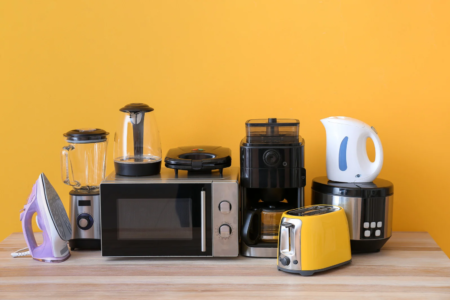Wallpaper removal can be a challenging home improvement task, but with the right approach, it doesn’t have to be overwhelming. Whether updating your home’s decor or preparing walls for a fresh coat of paint, knowing how to remove wallpaper effectively is an essential skill for any homeowner or DIY enthusiast. This comprehensive guide will walk you through four proven methods to remove wallpaper safely and efficiently, all while keeping your budget in mind.
Removing wallpaper can be time-consuming, but the satisfaction of revealing a clean, smooth wall ready for your next design project is well worth the effort. Each method we’ll discuss has its advantages, and the best choice for you will depend on factors such as the type of wallpaper, the condition of your walls, and your personal preferences.
Preparation is Key
Proper preparation is crucial before embarking on any wallpaper removal project. This initial step will save you time, protect your home, and simplify the cleanup process.
Protect Your Floors: Start by laying down sheet plastic, cardboard, or old towels to shield your floors from water, chemicals, and wallpaper debris. This protective layer will catch any drips or scraps, making cleanup a breeze and preventing potential damage to your flooring. Secure the covering with painter’s tape to keep it in place as you work.
Clear the Walls: Remove all decorations, shelves, switch plates, and outlet covers from the walls. This will give you unobstructed access to the wallpaper and prevent accidental damage to your belongings. Store these items safely away from your work area until you’re ready to redecorate.
Safety First
Before you begin removing wallpaper, it’s essential to prioritize your safety and the safety of those around you.
- Lead-Based Paint Precautions: If your home was built before 1978, there’s a possibility that the walls underneath the wallpaper were painted with lead-based paint. To protect yourself from potential lead dust, wear an N95 respirator mask. This precaution is especially important if you’re unsure about the age of the paint or if you plan to sand the walls after removing the wallpaper.
- Handle Steamers with Care: Exercise caution to avoid burns using a wallpaper steamer. Always allow the steamer to cool completely before refilling the water reservoir. Keep the steamer cord away from water and ensure proper ventilation to prevent excessive humidity buildup.
Method 1: Steam Removal
Steam removal is often considered the most effective and efficient method for removing wallpaper, especially for larger or stubborn areas.
Prepare the Steamer:
- Fill the steamer’s reservoir with clean water according to the manufacturer’s instructions.
- Attach the steaming plate securely.
- Plug in the steamer and allow it to heat up until it produces a steady stream of steam. This usually takes about 10-15 minutes.
Steam the Wallpaper:
- Starting at the top of the wall, place the steamer plate against the wallpaper for 15-20 seconds.
- Move the plate slowly, ensuring you don’t leave it in one spot for too long to prevent damage to the wall underneath.
- Work in small sections, about 2-3 square feet, to ensure the wallpaper remains damp and pliable.
Scrape Away:
- After steaming a section, use a putty knife or wallpaper scraper to peel off the loosened wallpaper.
- Hold the scraper at a 30-45-degree angle to the wall to avoid gouging the surface.
- If you encounter resistance, re-steam the area rather than forcing the scraper.
Final Clean-Up:
- Once you’ve removed all visible wallpaper, re-steam any areas with remaining adhesive.
- Use a damp sponge or cloth to wipe down the walls, removing any leftover glue or paper residue.
- Allow the walls to dry completely before painting or applying new wallpaper.
Method 2: Water and Vinegar or Fabric Softener
This method is an excellent, budget-friendly alternative to using commercial wallpaper removers. It’s particularly effective for paper-based wallpapers.
Mix Your Solution:
- Combine warm water and white vinegar in a spray bottle for a vinegar solution.
- Alternatively, mix three parts warm water with one part liquid fabric softener.
- Shake the bottle well to ensure the ingredients are thoroughly combined.
Saturate the Wallpaper:
- Working in small sections, spray the solution generously onto the wallpaper.
- Allow the solution to soak into the paper for several minutes. This helps break down the adhesive.
- For stubborn or non-porous wallpapers, use a scoring tool to create small holes in the paper before applying the solution. This allows better penetration.
Peel and Scrape:
- Start at a corner or seam and gently lift the wallpaper with a putty knife or scraper.
- If the paper doesn’t come off easily, reapply the solution and wait a few more minutes.
- Continue working in small sections, spraying and scraping until all the wallpaper is removed.
- For any stubborn spots, reapply the solution and use a scoring tool if necessary.
Method 3: Liquid Stripper
Commercial liquid strippers are formulated specifically for wallpaper removal and can be very effective, especially for vinyl or painted wallpapers.
Apply the Stripper:
- Choose a liquid wallpaper stripper from your local home improvement store.
- Pour the stripper into a garden sprayer or use a sponge to apply it evenly to the wallpaper.
- Work in manageable sections, typically about 3-4 feet wide.
- Allow the stripper to penetrate the wallpaper for about five minutes. Some types may require longer; always follow the manufacturer’s instructions.
Scrape Off the Wallpaper:
- Starting at a corner or seam, use a putty knife to lift the wallpaper gently.
- If the wallpaper doesn’t come off easily, reapply the stripper and wait a few more minutes.
- Work slowly and carefully to avoid damaging the wall underneath.
- For stubborn areas, use a scoring tool to help the stripper penetrate better, then reapply and scrape.
Method 4: Gel Remover
Gel removers are excellent for vertical surfaces as they cling to the wall without dripping, making them ideal for textured or delicate wallpapers.
Apply Gel Remover:
- Choose a wallpaper removal gel from your local home improvement store.
- Use a brush or roller to apply a thick, even gel coat to the wallpaper.
- Work in about 3-4 feet wide sections to ensure even coverage and prevent the gel from drying out.
Wait and Remove:
- Allow the gel to sit on the wallpaper for 15-30 minutes or as the manufacturer directs.
- Lift a corner of the wallpaper with a putty knife or scraper and peel it away from the wall.
- If you encounter resistance, reapply the gel and wait a few more minutes before attempting to remove the wallpaper again.
- Continue this process until all wallpaper is removed.
- Wipe down the walls with a damp sponge to remove any remaining adhesive or gel residue.
Extra Tips
- For plaster walls: Using a steamer often yields the best results. The moist heat helps loosen the wallpaper without damaging the delicate plaster underneath. Be careful not to oversaturate the wall, as excess moisture can damage the plaster.
- Avoid Damage: Use plastic putty knives instead of metal to prevent gouging or scratching the wall. When using a steamer, please don’t leave it in one spot for more than 30 seconds, as this can damage the wall or cause the adhesive to bond further with the surface.
- Persistent Areas: For particularly stubborn wallpaper, use a scoring tool to create small perforations in the paper. This allows water, steam, or removal solutions to penetrate more effectively, making the wallpaper easier to remove.
FAQ
What is the easiest way to remove old wallpaper?
While the “easiest” method can vary depending on the type of wallpaper and wall surface, using a steamer is generally considered the most efficient and effective way to remove old wallpaper. The steam penetrates the paper and loosens the adhesive, making it easier to scrape off.
Is it easy to remove wallpaper?
Removing wallpaper isn’t typically considered an easy task, but it’s a manageable DIY project with patience, the right tools, and proper techniques. The difficulty level can vary depending on factors such as the age of the wallpaper, the type of adhesive used, and the condition of the walls underneath.
How do professionals remove old wallpaper?
Professional wallpaper removers often use a combination of techniques. They typically start by scoring the wallpaper to allow better penetration of removal solutions. Then, they may use a commercial-grade steamer or apply a professional-strength wallpaper remover. Finally, they carefully scrape and peel away the wallpaper, ensuring minimal damage to the underlying wall surface.
Is it better to remove wallpaper or add new wallpaper over it?
In most cases, removing old wallpaper before applying new wallpaper or paint is better. Removing the old wallpaper allows you to inspect and repair the wall surface, ensuring a smooth foundation for your new decor. It also prevents issues like bubbling or peeling when new wallpaper is applied over old. While it may seem like more work upfront, removing old wallpaper typically results in a better, longer-lasting finish.
Conclusion
Removing wallpaper can be time-consuming, but with the right methods and patience, it’s a task that most homeowners can handle. Whether you use steam, a homemade solution, liquid stripper, or gel remover, the key is to work methodically and avoid damaging the underlying wall surface.
Remember to prioritize safety, properly prepare your space, and choose the best method for your specific situation. With these tips and techniques, you’ll be well on your way to revealing a clean, smooth wall ready for your next design adventure.








